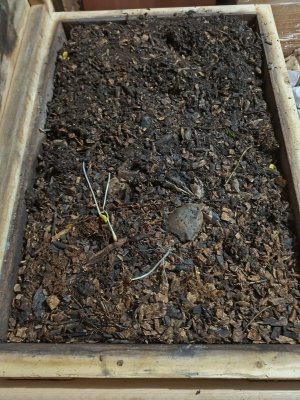After reading a couple of posts about people vermicomposting I'm curious about what others are doing and why. From what I've watched and read, the way I do things is not the most common. My approach is more of a combination of what I see as best practices, at my scale, that I find fun. The basics are a 3 layer vertical migrating system. Bedding is currently a mix of aged wood chips, leaf mould, peat moss/potting mix, yard waste and cardboard. Food is coffee grounds, wide variety of vegetable scraps, egg shells, green trimmings and flour or some sort of grain. I also add a little kelp meal, azomite, gypsum and a few other things. I'm not terribly scientific about it but stuff seems to grow well when it's in the mix. For the most part I just add a layer of food and amendments, then cover with bedding. Feed around once a week. Harvest the bottom bin when the top bin is 3/4 full.
What's everyone else doing?
What's everyone else doing?

